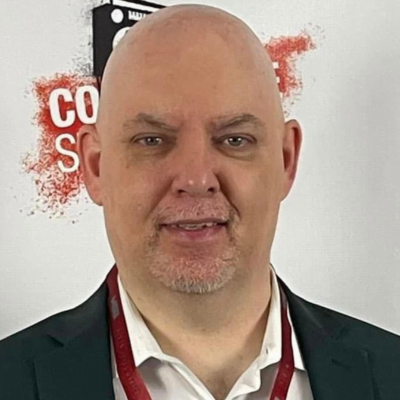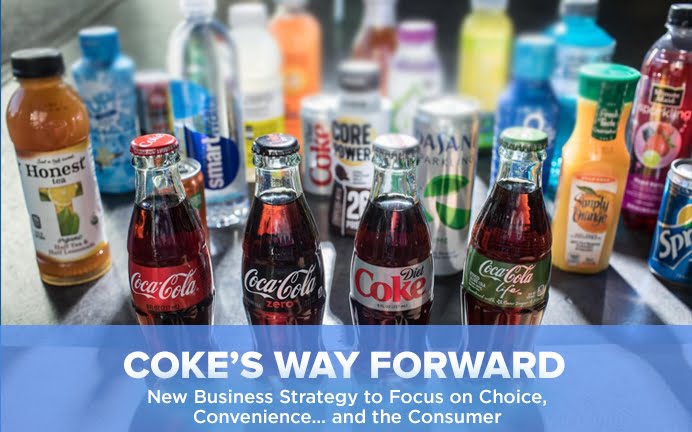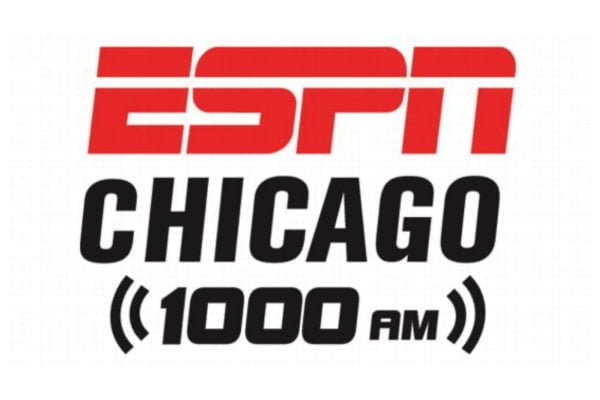When you’ve been the dominant player in your business, and one of the world’s largest and most successful companies, it’s easy to become complacent and fall in love with your own press. Who could blame you? Profits are soaring, customer satisfaction is high, and the world has an affinity for what you provide.
But what happens when the world begins to change, and your company is forced to play under a different set of rules? All of a sudden, the things you’ve done for the past century are now placed under a microscope, and failure to respond properly could have a crippling effect on your next century of productivity, if you even last that long.
This is what Coca-Cola was faced with in recent years, and their story of reinventing themselves and turning their attention to the “Way Forward” is impressive. You’ll learn by the end of this piece how it relates to the sports media world you presently operate in.
Since 1886, people have enjoyed soft drinks and recognized Coke as a global leader in the beverage business. Brand awareness and company growth have been strong, and although Pepsi has been a formidable foe, the carbonated soft drink market has belonged to the original soda giant.
So what happened that forced Coke to change its business model or risk becoming less necessary to its customers?
Society demanded it.
In 2015, soda sales declined for the 11th straight year, reaching a thirty year low according to Beverage Digest. People started becoming more health conscious and focused on their diets, often replacing soda with healthier drinks. As interest in eliminating soda grew, beverage companies found themselves at a crossroads.
Sensing that adjustments were critical, Coke revised its business strategy and focused on becoming a ‘total beverage company’. As part of the company’s new plan of attack, they’d begin offering different types of soda, and increase their offerings to dairy, coffee, juices, water, coconut water and organic tea.
The timing couldn’t have been better. As sales for soda increased slowly at 2-3%, other brands under the Coke umbrella such as Smartwater, Minute Maid, Dasani and Honest Tea, began to generate stronger results. That gave Coke the confidence to pledge further support to its new vision, and announce that the company would reduce sugar in more than 500 of its drinks in 2017, while investing additional resources in marketing low and no sugar beverages.
Although Coke isn’t out of the woods yet, transformation takes time and often comes with a few bumps and bruises. The reason I brought their story to your attention is because it relates to what many of us in the media business are facing today.
When you look at the world and how your audience uses your brand, it’s much different than what you encountered 5-10 years ago. To put it in perspective, our audio/video is what soda has been to Coke. But, just as the public began pushing back on the soft drink giant to reduce sugar and help them enjoy drinks in a healthier way, our listeners and viewers have challenged us to make their experiences better, shorter, cleaner, and cheaper across multiple platforms.
From an audio standpoint, the listener wants to enjoy our content in their car, on their phones, thru voice on-demand technology, and in shorter doses. Why are podcasts appealing? Because a person can listen to them at their convenience, and be done with an entire episode in a short period of time. They’re also not forced to sit thru exorbitant commercial breaks and they can locate the content they value most and eliminate parts of the show that have less relevance.
While that presents difficulties for a traditional model which has relied on 14-16 minutes of inventory per hour, that’s the industry’s problem to solve, not the audience’s. You don’t need to do an extensive study to discover that people value their time, and if you overload them with commercials, they will tune you out and find a different audio experience to invest their time in. There are thousands of content options available and although the listener may prefer your brand, personality and content, they won’t sit thru long stretches of irrelevant material to get it.
From a viewer’s standpoint, people are cutting the cord and pushing back on cable companies because they are fed up paying for programming that they don’t value or spend their time watching. It may have been acceptable twenty years ago to have hundreds of channels available for $100 per month, but people now prefer less choice for less money.
On an average, consumers have access to 206 television channels, yet they watch only 20 per month. This is why there has been rapid growth for services from Netflix, Hulu, Sling TV, Amazon Prime, and YouTube TV. While cable companies have continued to push TV services as if they’re carbonated sodas to an audience which has told them they are actively pursuing a diet, digital media providers have offered a smaller amount of channels for a much lower monthly fee. These products aren’t perfect and still lack many of the channels we spend our time viewing, but when bills can be reduced by 50-80%, it gets the public’s attention, and eventually their business.
A huge bright spot in all of this is that the appetite for audio and video remains alive and well. People love sports audio and video and continue to seek it out, talk about it, and pay for it. The content each brand and personality creates has significant audience appeal and is the most important asset each company has at their disposal to leverage future business. The way people listen, watch, and interact may change, but gifted personalities offering unique content on subjects that captivate local and national audiences still packs one hell of a punch.
This is why I’ve been such an advocate for selling total reach over ratings. Radio and/or TV is only one part of your success story. Most dominant brands have a strong connection with their fans beyond the airwaves, and every single platform where the audience invests time with you, is an opportunity to connect them to your advertisers. Clients may request evidence before agreeing to invest in your company, but if you can deliver a consistent return on their investment, they’ll care less in the future about your market share and more about your ability to help them move product and increase sales. Whether it comes from your airwaves, the stream, a podcast, Facebook Live, TV or a social media post, all that matters is the final result.
In a perfect world, we’d still be selling soda and enjoying the benefits it provided during a less sophisticated time. But when your audience’s thirst for your product dries up, you either offer an alternative beverage or risk becoming replaceable. As Coke said it best, show people “The Way Forward”. That’s the challenge media companies must meet head on and conquer in order to stay strong in future years.

Jason Barrett is the President and Founder of Barrett Media since the company was created in September 2015. Prior to its arrival, JB served as a sports radio programmer, launching brands such as 95.7 The Game in San Francisco, and 101 ESPN in St. Louis. He also spent time programming SportsTalk 950 in Philadelphia, 590 The Fan KFNS in St. Louis, and ESPN 1340/1390 in Poughkeepsie, NY. Jason also worked on-air and behind the scenes in local radio at 101.5 WPDH, WTBQ 1110AM, and WPYX 106.5. He also spent two years on the national stage, producing radio shows for ESPN Radio in Bristol, CT. Among them included the Dan Patrick Show, and GameNight.
You can find JB on Twitter @SportsRadioPD. He’s also reachable by email at Jason@BarrettMedia.com.









